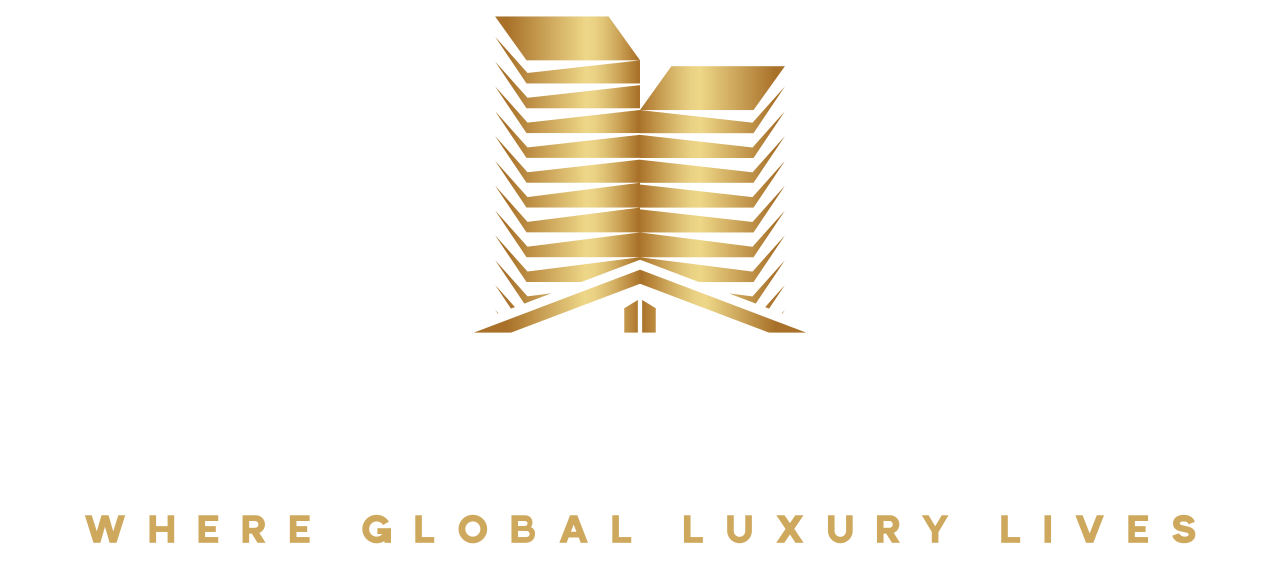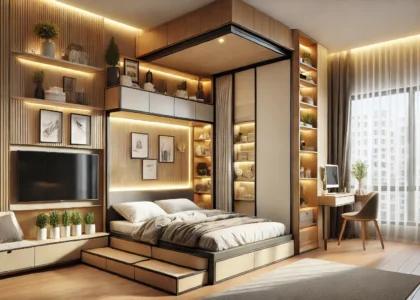1. Introduction
The COVID-19 pandemic fundamentally changed how people view their living and working spaces. As remote work became the norm and housing affordability became a concern, more people—especially millennials and Gen Z—began exploring alternative living arrangements. This shift led to the surge of co-living and co-working spaces, offering flexibility, affordability, and a strong sense of community.
In the luxury real estate market, developers are now integrating these shared-space concepts into high-end properties. Luxury homes for sale, exclusive homes worldwide, and global luxury estates are adapting to cater to a new generation of professionals and entrepreneurs who value experience over traditional property ownership.
2. The Rise of Co-Living Spaces
What is Co-Living?
Co-living is a modern housing concept where residents share common areas like kitchens and lounges while maintaining private bedrooms. The idea is to provide a community-driven lifestyle, making urban living more affordable and socially engaging.
Why is Co-Living Gaining Popularity?
Several factors have contributed to the rise of co-living spaces:
- Affordability: With skyrocketing property prices, especially in major cities, co-living offers a cost-effective alternative.
- Flexibility: Unlike traditional rental agreements, co-living spaces offer shorter leases, appealing to digital nomads and young professionals.
- Amenities and Services: Many luxury co-living spaces include housekeeping, high-speed internet, gym access, and co-working areas.
Luxury Co-Living in High-End Property Listings
The demand for luxury property specialists and luxury property advisors has increased as more developers enter the co-living market. High-end co-living spaces now offer premium services such as:
- Smart home automation
- Concierge services
- Rooftop pools and wellness centres

3. The Growth of Co-Working Spaces
Remote Work and the Co-Working Boom
The pandemic accelerated the remote work revolution, increasing demand for professional workspaces outside traditional office environments. Co-working spaces provide a structured yet flexible alternative to working from home.
Luxury Features in Co-Working Spaces
Premium co-working spaces cater to entrepreneurs, freelancers, and remote workers with amenities such as:
- High-speed Wi-Fi and private offices
- Executive meeting rooms with state-of-the-art technology
- On-demand business support services
Premium real estate services are now offering curated co-working experiences within luxury apartments for sale, ensuring convenience for residents.
4. The Intersection of Luxury and Shared Living
How is Luxury Real Estate Adapting?
Leading luxury real estate listings now include co-living and co-working features. Developers are merging high-end property listings with community-driven designs, ensuring exclusivity and privacy while maintaining social interaction.
Examples of High-End Shared Developments
Some renowned projects combining luxury property investments with co-living/co-working elements include:
- The Collective (London) – A luxury co-living development with high-end amenities.
- WeLive (New York) – Co-living spaces by WeWork designed for young professionals.
5. Investment Potential in Co-Living and Co-Working Spaces
Why Investors Are Interested
Investors are turning to co-living and co-working due to:
- High rental yields compared to traditional buy-to-let properties.
- Growing demand from young professionals and expatriates.
- Scalability, allowing developers to cater to different income segments.
The Role of Luxury Property Professionals
With luxury property brokers and consultants playing a crucial role, investors receive guidance on the best luxury real estate investments in this sector.
6. Key Features of Luxury Co-Living and Co-Working Spaces
The rise of luxury co-living and co-working spaces has led to the introduction of high-end amenities that cater to an elite clientele. Unlike traditional shared spaces, these upscale environments prioritise exclusivity, privacy, and convenience while fostering a sense of community.
Exclusive Design Elements and Amenities
Luxury co-living and co-working spaces are meticulously designed to offer both comfort and functionality. Some standout features include:
- Architectural Excellence – Premium co-living developments boast world-class architecture, designed by renowned firms.
- Designer Interiors – Lavish furnishings, high-end finishes, and custom décor set luxury co-living apart from standard shared spaces.
- Private and Communal Spaces – Private suites with en-suite bathrooms, coupled with shared lounges, cinemas, and libraries.
Integration of Smart Home Technology and Sustainability
High-end shared spaces are incorporating cutting-edge smart home solutions, including:
- Automated lighting and climate control
- Keyless entry and biometric security systems
- AI-powered concierge services
Additionally, sustainability plays a crucial role, with many developments featuring:
- Solar energy solutions
- Rainwater harvesting systems
- Eco-friendly construction materials
The Role of Global Real Estate Developers
Luxury developers worldwide are now integrating co-living and co-working elements into international luxury properties. With premium real estate services, they ensure that these properties meet the expectations of high-net-worth individuals.
7. The Impact on International Luxury Properties
How Co-Living and Co-Working Fit into the Global Luxury Market
The demand for shared spaces isn’t limited to one region. From Europe to Asia and the Americas, co-living and co-working developments are making their mark on the global luxury estates sector.
Regional Demand and Trends
Different regions have embraced co-living and co-working spaces in unique ways:
- Europe – Cities like London and Berlin are witnessing a rise in high-end co-living developments with curated experiences.
- North America – New York and Los Angeles are pioneering luxury co-working spaces within high-rise residential properties.
- Asia – Countries like Singapore and Japan are integrating co-living into their luxury villas for sale and serviced residences.
Luxury Apartments for Sale with Co-Living Elements
Developers are now marketing luxury apartments for sale that incorporate co-living and co-working spaces, attracting expatriates and young professionals seeking both exclusivity and convenience.
8. Challenges and Risks in the Co-Living and Co-Working Market
Despite its rapid growth, the luxury co-living and co-working sector faces several challenges.
Legal and Regulatory Considerations
Governments in various regions are still adapting to the legal complexities of shared living and working environments. Some common challenges include:
- Zoning laws and building regulations
- Taxation policies for co-living spaces
- Tenant rights and lease agreements
The Potential Impact on Traditional Luxury Property Brokers
With shared spaces gaining popularity, traditional luxury property brokers must evolve their business models to cater to this new demand. Instead of focusing solely on standalone luxury homes, many are now diversifying into luxury property investments that include shared-living components.
9. Future Predictions for Shared Spaces in the Luxury Market
As urbanisation accelerates and property prices continue to soar, the future of co-living and co-working appears brighter than ever.
Long-Term Outlook for Co-Living and Co-Working Spaces
- Continued growth in demand for flexible, high-end shared spaces
- Expansion into suburban and secondary cities
- Further integration of hospitality-inspired services
The Role of the Luxury Real Estate Network in Shaping This Trend
Leading luxury property advisors and brokers are actively shaping the co-living and co-working landscape. Through strategic partnerships and investment in premium developments, they are ensuring that luxury shared spaces remain an integral part of the upscale property market.

10. Conclusion
The post-pandemic real estate market has paved the way for the rapid rise of co-living and co-working spaces, particularly among millennials and Gen Z. As these generations prioritise flexibility, community, and premium experiences, the demand for high-end shared spaces continues to soar.
For investors, developers, and luxury property professionals, this evolving trend presents lucrative opportunities. By combining luxury real estate listings with innovative shared-space concepts, the future of high-end living and working is set to be more dynamic than ever.
Frequently Asked Questions (FAQs)
1. Are luxury co-living spaces a good investment?
Yes, luxury co-living spaces offer high rental yields, increased occupancy rates, and strong demand from professionals, making them a lucrative investment.
2. How do luxury co-working spaces differ from traditional offices?
Luxury co-working spaces offer premium amenities such as concierge services, private offices, and state-of-the-art meeting rooms, making them ideal for entrepreneurs and executives.
3. What are the main benefits of co-living for millennials and Gen Z?
Co-living provides affordability, flexibility, and a sense of community, making it an attractive option for young professionals and digital nomads.
4. How are luxury property brokers adapting to the co-living trend?
Brokers are incorporating co-living into their luxury property investments portfolios, catering to high-net-worth individuals seeking premium shared spaces.
5. What is the future of co-living and co-working spaces in the luxury market?
The future looks promising, with continued expansion, increased investor interest, and the integration of cutting-edge technology into global luxury estates.





